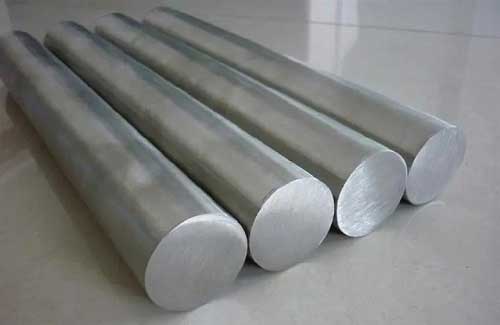Why does alloy steel with high carbon content break easily? (marketing department of Shanghai HY Industry Co., Ltd)
Bars with high carbon content have broken many times, such as shafts made of 45# steel, which will break after a short time of use. Taking samples from the fractured parts and conducting metallographic analysis, it is often impossible to find the cause, even if it is far-fetched to find some reasons, it is not the actual reason.
To ensure higher strength, carbon must also be added to the alloy steel, with which iron carbides precipitate. From an electrochemical point of view, iron carbide acts as a cathode, accelerating the anodic dissolution reaction around the substrate. The increase in the volume fraction of iron carbides within the microstructure is also attributed to the low hydrogen overvoltage properties of the carbides.
The surface of the steel is easy to generate and absorb hydrogen. When the hydrogen atoms infiltrate into the steel, the volume fraction of hydrogen may increase, and finally the resistance to hydrogen embrittlement of the material is significantly reduced.
The significant reduction in corrosion resistance and hydrogen embrittlement resistance of high-strength steels is not only detrimental to the properties of the steel, but also greatly limits the application of the steel.
For example, when automobile alloy steel is exposed to various corrosive environments such as chloride, under the action of stress, the phenomenon of stress corrosion cracking (SCC) that may occur will pose a serious threat to the safety of the car body.
The higher the carbon content, the lower the hydrogen diffusion coefficient and the higher the hydrogen solubility. Scholar Chan once proposed that various lattice defects such as precipitates (as trap sites for hydrogen atoms), potential, and pores are proportional to the carbon content. The increase of carbon content will inhibit hydrogen diffusion, so the hydrogen diffusion coefficient is also low.
Since the carbon content is proportional to the hydrogen solubility, the greater the volume fraction of carbides as hydrogen atom traps, the smaller the hydrogen diffusion coefficient inside the alloy steel, the greater the hydrogen solubility, and the hydrogen solubility also contains information about diffusible hydrogen, so Hydrogen embrittlement susceptibility is the highest. As the carbon content increases, the diffusion coefficient of hydrogen atoms decreases and the surface hydrogen concentration increases, which is caused by the decrease of the hydrogen overvoltage on the steel surface.
From the results of the dynamic voltage polarization test, the higher the carbon content of the sample, the more prone to cathodic reduction reaction (hydrogen generation reaction) and anodic dissolution reaction in acidic environment. Compared with the surrounding matrix with low hydrogen overvoltage, the carbide acts as a cathode with an increased volume fraction.
According to the results of the electrochemical hydrogen permeation test, the greater the carbon content and the volume fraction of carbides in the sample, the smaller the diffusion coefficient of hydrogen atoms and the greater the solubility. As the carbon content increases, the resistance to hydrogen embrittlement also decreases.
Slow strain rate tensile tests confirmed that the higher the carbon content, the lower the stress corrosion cracking resistance. Proportional to the volume fraction of carbides, as the hydrogen reduction reaction and the amount of hydrogen injected into the sample increase, the anodic dissolution reaction will occur, and the formation of the slip zone will also be accelerated.
When the carbon content increases, carbides will precipitate inside the steel. Under the action of electrochemical corrosion reaction, the possibility of hydrogen embrittlement will increase. In order to ensure that the steel has excellent corrosion resistance and hydrogen embrittlement resistance, the carbide Precipitation and volume fraction control are effective control methods.
The application of steel in auto parts is subject to some limitations, also due to its marked decrease in resistance to hydrogen embrittlement, which is caused by aqueous corrosion. In fact, this hydrogen embrittlement susceptibility is closely related to the carbon content, with the precipitation of iron carbides (Fe2.4C/Fe3C) under low hydrogen overvoltage conditions.
Generally, for the localized corrosion reaction on the surface caused by stress corrosion cracking phenomenon or hydrogen embrittlement phenomenon, the residual stress is removed by heat treatment and the hydrogen trap efficiency is increased. It is not easy to develop ultra-high-strength automotive steels with both excellent corrosion resistance and hydrogen embrittlement resistance.
As the carbon content increases, the hydrogen reduction rate increases, while the hydrogen diffusion rate decreases significantly. The key to using medium carbon or high carbon steel as parts or transmission shafts is to effectively control the carbide components in the microstructure.
Shanghai HY Industry Co., Ltd is qualified super Stainless steel supplier.We have more than 20 years experience in kind of superalloy,Cobalt alloy,Titanium alloy.
When you want to know more about our products, please contact us:
https://hynickelalloy.com


